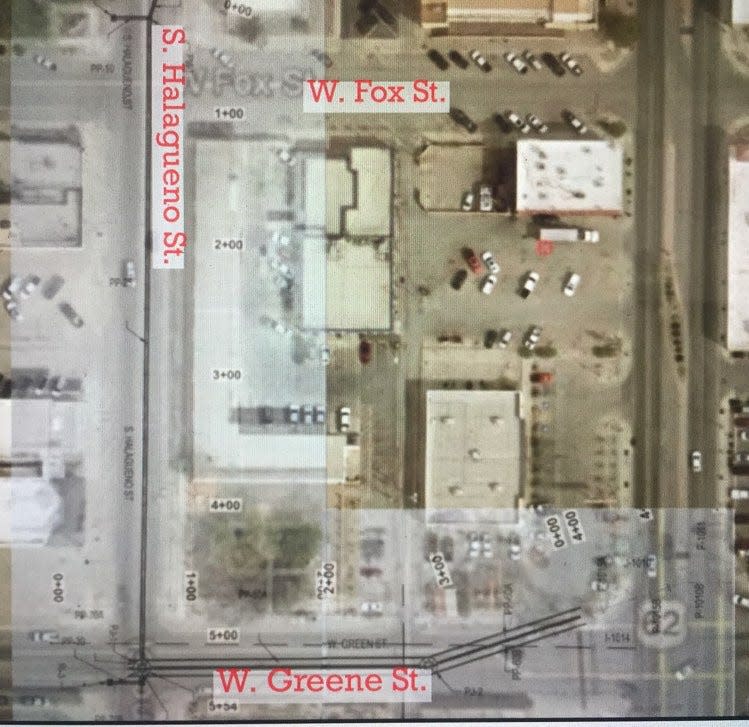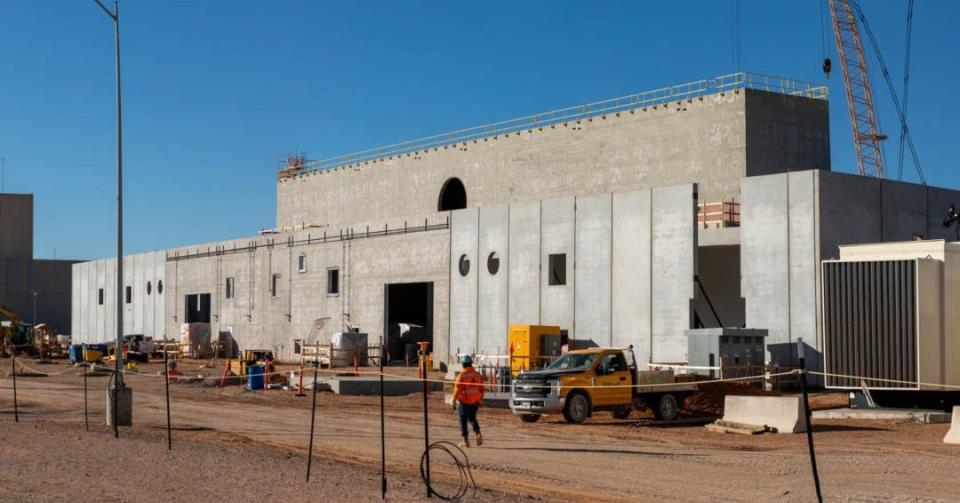Carlsbad seeks millions from feds for flood project for 'underserved community'
The City of Carlsbad sought $2 million to build a large drainage project in a portion of the community considered disadvantaged by federal standards, said Angie Barrios-Testa, director of municipal services.
On Jan. 9, the Carlsbad City Council approved a submission to the U.S. Department of Energy’s (DOE) Office of Emergency Management Community Capacity Building Grant Program (EM-CCBGP) for the Canal Street Storm Drainage Project.
She said the city was in the process of working on a design concept for DOE, which is due Jan. 25.
More: Carlsbad gets $1.1M federal grant to begin design of Dark Canyon Bridge
About construction of a flood channel
The project takes in portions of West Greene Street, South Halagueno Street and West Fox Street, according to Barrios Testa.
She said the project could cost Carlsbad around $3 million and was listed in the top-20 of infrastructure projects deemed critical for state and federal funding for the Infrastructure Capital Improvement Plan (ICIP) for 2025 through 2029.
The city plans to construct a flood channel diverting stormwater runoff while removing debris and pollution.
Barrios-Testa said vegetation would be grown to enable rain infiltration.

In a memorandum to councilors, she said the proposed project area encompasses portions of Carlsbad considered disadvantaged because they meet nearly three to four burdens and socioeconomic thresholds set up by the Climate and Economic Justice Screening Tool (CEJST).
The tool includes an interactive map and database that helps federal agencies identify communities that have needs in the following eight categories: climate change, energy, health, housing, legacy pollution, transportation, water and wastewater, and workforce development. It grew out of a 2021 executive order from President Joe Biden to the Council on Environmental Equality, according to that council.
“The tool uses this information to identify communities that are experiencing these burdens. These are the communities that are disadvantaged because they are overburdened and underserved,” according to CEJST.
More: Republicans want to repeal New Mexico's electric vehicle requirement
How a federal grant works in underserved areas
Passed by Congress in 2022, the grant program was part of the Consolidated Appropriations Act, 2023, which provided funding for a wide range of domestic and foreign projects, including disaster relief, read the Congress.gov website.
“The goal of the CCBGP is to reinvest in disadvantaged communities that have been affected by decades of nuclear defense research and environmental cleanup efforts. Residents in these communities may have been adversely and/or disproportionately affected by environmental, climate, and human health policy outcomes,” noted the Grants.gov website.
More: Why did so much of WIPP's 479 nuclear waste shipments in 2023 come from Idaho?
According to the website, the CCBGP provides resources to communities not benefitting from significant economic activities generated by DOE cleanup programs.
“The CCBGP objectives are focused on strengthening relationships with local communities by supporting projects that serve community and economic development goals, promote revitalization efforts, and promote inclusive community engagement practices,” according to Grants.gov.

Since 1999, the Carlsbad area has been home to the Waste Isolation Pilot Plant (WIPP) has ten in defense-related transuranic (TRU) waste from DOE sites across the country, cited WIPP’s website.
Potential project timeline
Barrios-Testa said the application deadline is April 30, 2024. She added the DOE should notify the city 60 days after the deadline if the grant is awarded.
“It is difficult to say for certain how soon we can begin if the funds are awarded. All I can say is that the City will work as quickly as possible to get this critical project moving forward,” she said.
Mike Smith can be reached at 575-628-5546 or by email at MSmith@currentargus.com or @ArgusMichae on X, formerly known as Twitter.
This article originally appeared on Carlsbad Current-Argus: Carlsbad seeks $2M from U.S. Department of Energy for flood work

